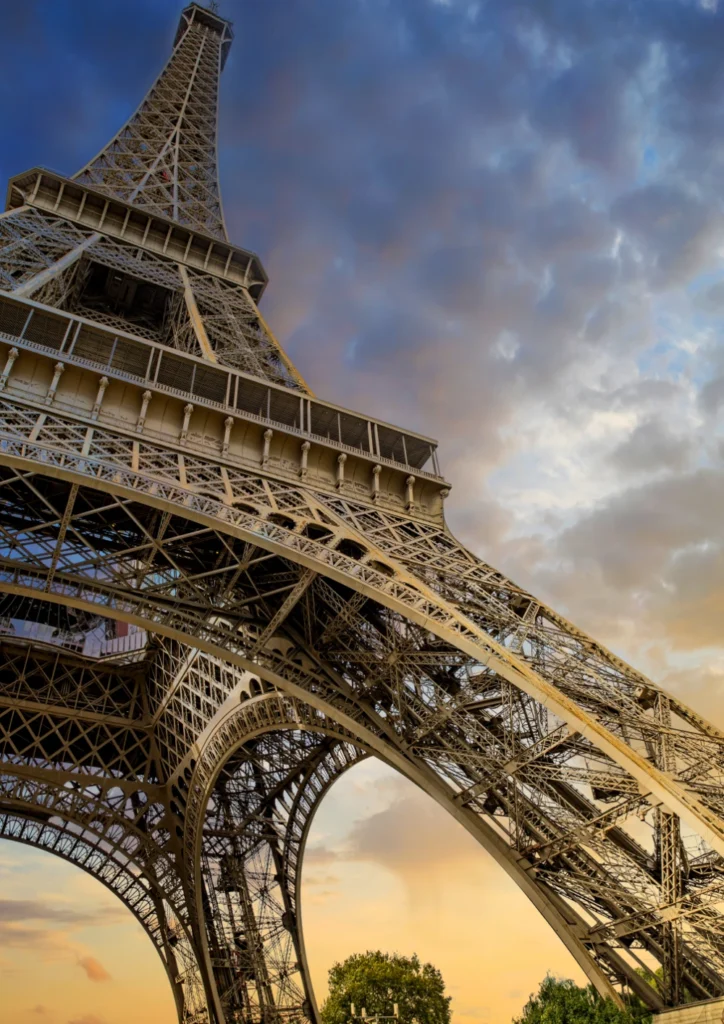Introduction
The Eiffel Tower stands as an iconic symbol of France, a testament to human ingenuity and architectural brilliance. Since its inauguration in 1889, this magnificent structure has captivated the hearts and minds of millions of visitors from around the globe. Let’s embark on a journey through time to explore the rich history and enduring legacy of the Eiffel Tower.
Defining the Eiffel Tower
The Eiffel Tower, La Tour Eiffel in French, is a wrought iron lattice tower located on the Champ de Mars in Paris, France. It was designed by Gustave Eiffel and his team of engineers as a centerpiece for the 1889 Exposition Universelle (World’s Fair), celebrating the 100th anniversary of the French Revolution.
Relevance and Importance
As one of the most recognizable landmarks in the world, the Eiffel Tower symbolizes not only the architectural prowess of the 19th century but also the spirit of innovation and cultural significance of France. Its enduring popularity as a tourist attraction underscores its timeless appeal and universal allure.
Historical Background
Concept and Construction
Gustave Eiffel’s Vision
Gustave Eiffel, a renowned French engineer, envisioned a monumental structure that would showcase France’s industrial and engineering prowess on the world stage. Inspired by the advent of iron construction techniques, he proposed a design for a soaring tower that would surpass all existing structures in height.
Engineering Marvel
The construction of the Eiffel Tower was a remarkable feat of engineering, employing over 18,000 individual iron parts and more than 2.5 million rivets. Gustave Eiffel’s innovative use of prefabricated components and meticulous attention to structural integrity ensured the tower’s stability and durability.
Inauguration and Reception
Unveiling Ceremony
On March 31, 1889, the Eiffel Tower was officially inaugurated in a grand ceremony attended by dignitaries and spectators from around the world. Gustave Eiffel himself ascended to the top of the tower, hoisting the French flag as a symbol of national pride and achievement.
Public Reaction
Despite initial skepticism from some quarters of the Parisian elite, the Eiffel Tower quickly captured the imagination of the public and garnered widespread acclaim for its innovative design and monumental scale. Its soaring silhouette against the Parisian skyline became an instant icon of modernity and progress.
Evolution and Transformation
Architectural Legacy
Influence on Modern Architecture
The Eiffel Tower’s revolutionary design and engineering techniques paved the way for the development of modern skyscrapers and steel-framed structures. Its iconic silhouette has inspired countless architects and designers, leaving an indelible mark on the world of architecture.
Cultural Icon
Symbol of Paris
The Eiffel Tower has become synonymous with the city of Paris, serving as a beloved landmark and cultural icon. It has featured prominently in literature, art, and popular culture, serving as a backdrop for countless films, photographs, and romantic rendezvous.
Tourism and Commerce
Tourist Magnet
Each year, millions of tourists flock to Paris to catch a glimpse of the Eiffel Tower and ascend its towering heights for panoramic views of the city. The tower’s observation decks, restaurants, and souvenir shops attract visitors from every corner of the globe, generating significant revenue for the local economy.
Preservation and Restoration
Conservation Efforts
Historical Landmark
In recognition of its cultural and historical significance, the Eiffel Tower was designated a UNESCO World Heritage Site in 1991. This prestigious designation underscores the importance of preserving and protecting this architectural masterpiece for future generations to enjoy.
Ongoing Maintenance
Structural Upkeep
To ensure the safety and integrity of the Eiffel Tower, regular maintenance and restoration efforts are undertaken by a team of skilled engineers and craftsmen. From repainting the tower’s iconic lattice to reinforcing its foundations, these efforts are essential for preserving its beauty and structural stability.
Conclusion: A Towering Legacy
In conclusion, the Eiffel Tower stands as a towering testament to human creativity, innovation, and perseverance. From its humble beginnings as a daring engineering experiment to its status as a global cultural icon, the Eiffel Tower continues to inspire awe and admiration more than a century after its construction. As we gaze upon its majestic silhouette against the Parisian sky, let us marvel at the enduring legacy of this extraordinary symbol of beauty and grandeur.

